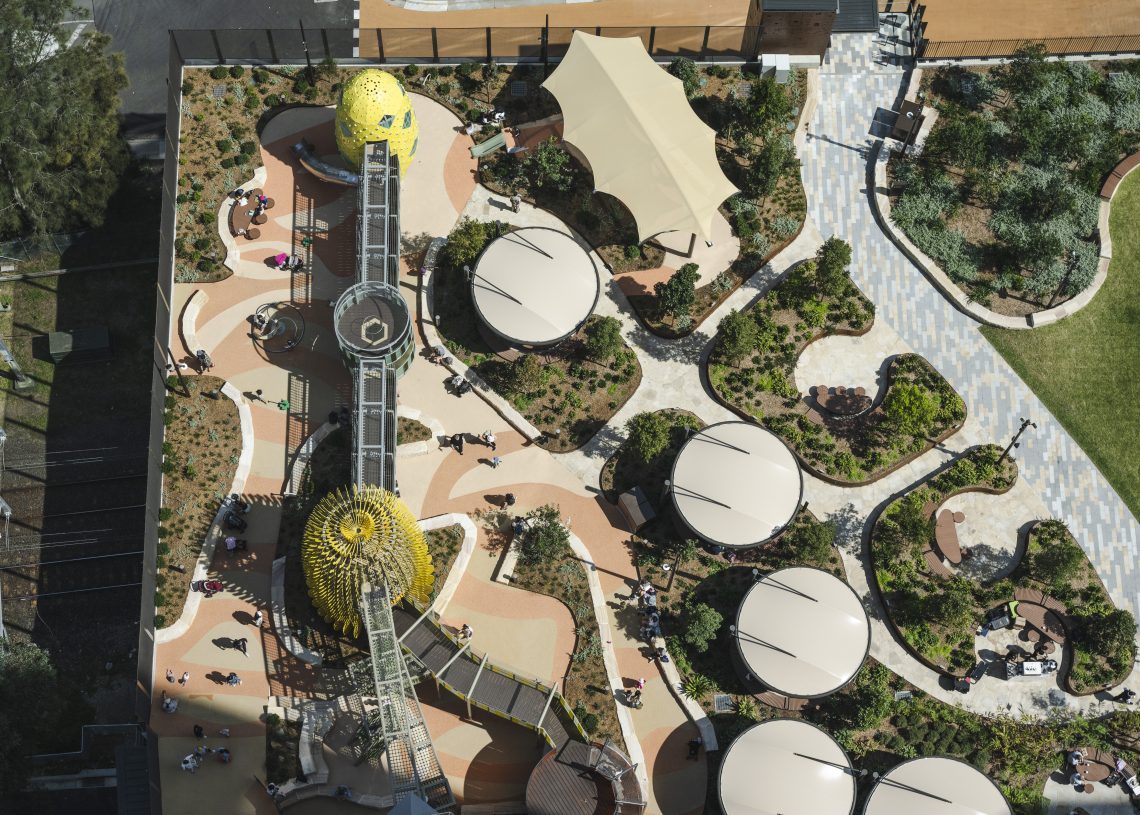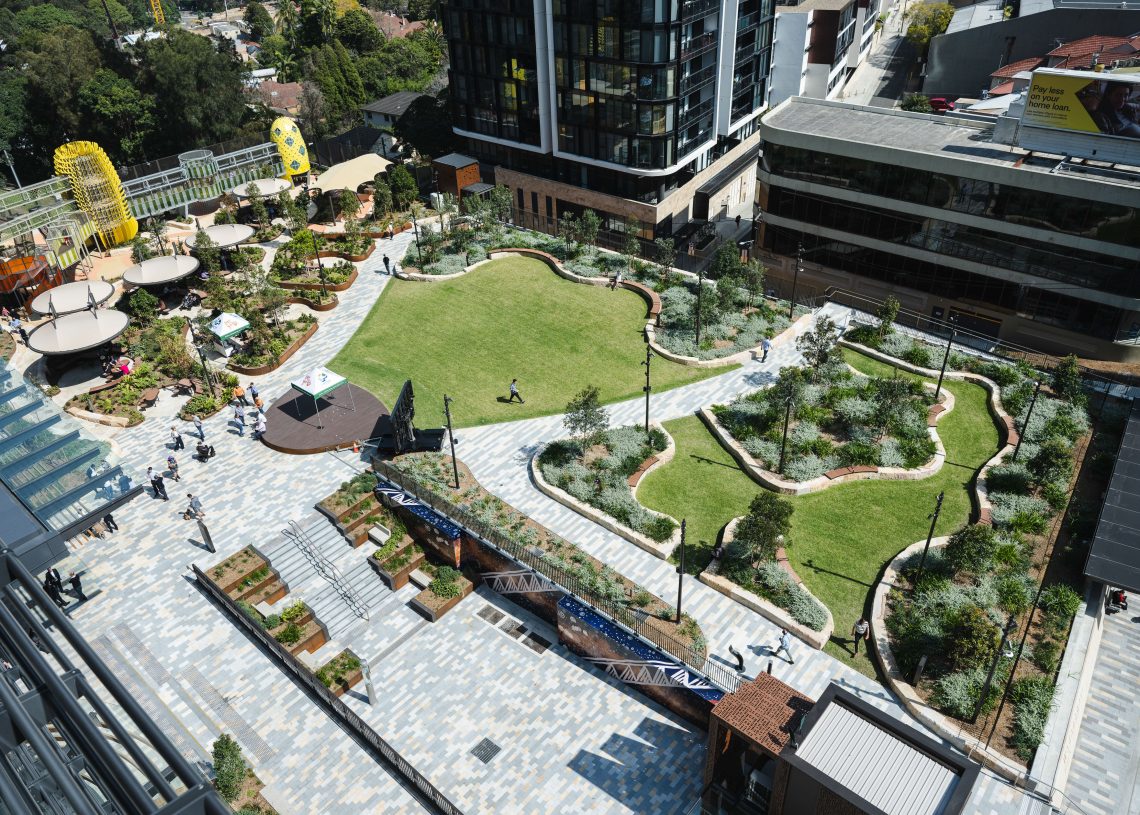Innovative design management successfully brought the unconventionally located Wadanggari Park to life.
World Landscape Architecture describes Wadanggari Park as “quite possibly the only park built over a railway line in Australia”.
The new 4750 m2 public space, constructed for Lane Cove Council and located opposite Sydney’s St Leonards train station, features a lawn, plaza, passive nooks and an adventure playground.
The word ‘wadanggari’ means banksia in the Cammeraygal language, and the play space was designed to represent the life stages of the iconic native flower.
With a capital value under $50 million, this project is relatively modest in size and seemingly simple in concept – but it posed significant design challenges.
Any project in the vicinity of a rail line is fraught and this park sat directly atop the rail corridor. It has been designed to seamlessly connect residential and commercial communities with retail and hospitality precincts and the train station underpass below.
“I knew it would be a challenge, but it was like nothing I had ever experienced before,” said Rick Hopkins FIEAust, Design Manager with Aurecon at the time.


The project required collision and derailment studies and risk assessments; adjustments to overhead wiring structures; tunnel fire safety considerations with complex emergency services at track level; and vehicle tracking and liaison with Fire and Rescue NSW, Ausgrid, Telstra and Sydney Water.
“The application of design management principles helped manage the project’s complexities and enabled a successful outcome,” Hopkins said.
Reticulation challenges
The bridge was built using precast concrete Super-T girders spanning 30 m. In the early hours of the morning these girders were lifted into place from the Pacific Highway using one of the largest cranes in the world that had to be booked 12 months in advance.
A single 33 m long precast L-Girder was installed at street level; this was delivered in three pieces and spliced together onsite.
Particularly challenging was the reticulation of services on the deck. This included drainage, irrigation, communications, power and lighting, and security, within a limited depth and with no penetrations permitted in the deck and no services to run under the deck.
“The project required the installation of a waterproofing membrane with many penetrations for concrete plinths for lighting, security, water bubblers, seating and playground structures, yet was required to prevent any drips onto the track below,” Hopkins said. “We also had to build overland flow paths, with no water permitted to fall into the rail corridor.
“It was considered that the whole project was too ambitious, had too many obstacles and simply wouldn’t happen. But somehow, we did it. It now opens the possibility of creating more public places in similar unused airspaces over our rail corridors.”
